Old Venetian Port of Chania, The Jewel of Crete
About
The Old Venetian Port of Chania is truly the jewel of Crete, a sparkling gem on the island’s northern coast. Steeped in centuries of history and undeniable charm, the Old Venetian Port was built by the Venetians in the 14th century and masterfully designed for bustling commerce and protection against pirates.
Standing proudly at the harbour entrance, one of the most famous landmarks at the Old Venetian Port of Chania is the Lighthouse of Chania. This iconic lighthouse symbolises the city and is a must-see for every visitor. You can enjoy a leisurely walk along the breakwater to get close to the lighthouse or admire its beauty from anywhere along the harbour. As the sun sets, the scene becomes truly magical—the lighthouse and the entire port are bathed in golden and pink hues, offering one of the most breathtaking sunsets in Chania. Of course, the Old Venetian Port is home to many more remarkable attractions, which I will highlight below.
Across the ages, the harbour has witnessed Venetian merchants and sailors, Ottoman occupiers, and generations of local families living and working along its lively quays. Today, strolling along the waterfront promenade, you can feel the unique magic of a place where East meets West—where imposing Venetian stone arsenals and fortifications stand beside an Ottoman-era mosque. The energy of modern cafés and restaurants fills the air.
The harbour is home to many remarkable attractions waiting to be explored, from museums and historic buildings to picturesque alleys and vibrant squares. No wonder this scenic port is one of the most photographed places in Chania, always enchanting visitors with its timeless character. It’s the place I always return to—my favourite spot in the city.
Historical Overview
When and by whom was it built? As we can see, the Old Venetian Port of Chania took shape under Venetian rule, with construction beginning around 1320. The Venetians controlled Crete from the 13th to the 17th centuries. Chania (then called La Canea) became an important naval and commercial centre. They engineered the harbour with two basins: a western basin for unloading goods into warehouses and an eastern basin dedicated to shipbuilding and repairs. Massive stone shipyards known as the Neoria (or arsenals) were built along the water from 1467 to 1599 to house and repair ships. At its peak, the port bustled with galleys, merchants, and naval guards – all protected by stout walls and the Firkas Fortress guarding the entrance.
Who used it through the ages? During the Venetian period, the harbour thrived as Chania’s main port, teeming with traders across the Mediterranean. In 1645, however, Chania fell to the Ottoman Turks. Under Ottoman rule, the harbour’s prominence declined. The Ottomans had little naval use for Chania’s shallow port and allowed parts of it to silt up. Some Venetian arsenals were repurposed or even demolished – nine of the seventeen shipsheds were torn down and converted to military storage during the Turkish occupation. The Ottomans did leave their mark by building the Janissaries Mosque on the waterfront and using the fortress as barracks and a prison. By the 19th century, as large steamships emerged, the old harbour was less practical. The Egyptians (who administered Crete on behalf of the Ottomans in the early 19th century) even reconstructed the crumbling Venetian lighthouse into a unique minaret-shaped tower around 1830 – the form we still admire today.
When did it stop being the main port? Over time, the limitations of the harbour (it’s relatively shallow and prone to silting) meant it could not accommodate bigger modern ships. After the Ottoman era, especially by the late 19th and early 20th century, most commercial shipping moved to the deep, natural harbour of Souda Bay east of the city. Souda became the new main port of Chania, and the old Venetian Harbour gradually ceased to function as Chania’s primary port for large vessels. By the mid-20th century, the Old Harbour was effectively used only by small fishing boats and kaïks. At the same time, major ferries and trade ships docked at Souda. This marked the end of an era for the Venetian Harbour as a working port.
Evolution Through Time
Despite its changing fortunes, the Old Venetian Port’s role evolved rather than vanished. Venetian era: It was the island’s lifeline for trade and a strategic naval base. Ottoman era: The harbour was less critical for trade; instead, it served local needs and military purposes (with the fort and barracks in use), and parts fell into disrepair. In the 20th century, Chania’s old town (including the harbour) was spared overdevelopment. 1In 965, the historic walled city was declared a protected heritage site, preserving the harbour’s character. From a derelict state in the early 20th century, the area slowly transformed into Chania’s cultural and touristic heart. Locals repaired buildings, and tavernas and cafés opened along the water. The once utilitarian docks now host fishing boats, sailing yachts and tour vessels, while the old warehouses became museums, galleries, and charming restaurants. The harbour went from a Medieval commercial port to a neglected backwater, and today lives on as a vibrant historic quarter – the soul of Chania’s Old Town.
Landmarks Around the Old Port of Chania
Around the Old Venetian Port of Chania, you’ll find remarkable landmarks that tell the story of Chania’s rich past. These are the must-see sights along the waterfront:
- The Lighthouse: The iconic 21-metre lighthouse stands at the harbour entrance. Initially built by the Venetians around the 16th century, it was rebuilt in its present form by Egyptian craftsmen during Ottoman rule (c.1830). With its distinctive minaret-like shape, the lighthouse is Chania’s symbol – magnificent at sunset and visible everywhere along the quay. (Note: You can walk the long breakwater to get up close, though the lighthouse is not open to climb.)
- Firkas Fortress: This Venetian fortress (built circa 1580–1645, completed just before the Ottoman conquest) anchors the harbour’s northwest corner. Its name, “Firka”, means barracks – indeed, it housed Venetian troops and later Ottoman soldiers. A heavy chain was once strung from here across to the lighthouse base to close the port in emergencies. Don’t miss the fortress’s small corner watchtower: this is where the Greek flag was raised in 1913 to celebrate Crete’s unification with Greece. Today, the fort’s grounds offer superb views, and its buildings host the Maritime Museum of Crete.
- Maritime Museum of Crete: Located at the entrance of Firkas Fortress, this museum (also called the Nautical Museum) showcases Chania’s seafaring history. Inside, you’ll find model ships, historic naval instruments, photographs and relics from ancient Minoan times through World War II. (A museum annexe in one of the old arsenals even displays a full-size replica of a Minoan ship!) It’s a fascinating stop for history enthusiasts, providing context to the harbour’s maritime past.
- Grand Arsenal (Megalo Arsenali): The westernmost and most significant Venetian shipyard building, distinguished by its thick walls. It was the last arsenal built (completed in the early 1600s) and later modified by the Ottomans, who added a second storey. Over the years, it has served as a school, hospital, and even Chania’s City Hall, which was built in the early 20th century. After suffering damage in WWII, the Grand Arsenal was beautifully restored in the 1990s. Today, it houses the Centre for Mediterranean Architecture, hosting exhibitions, cultural events, and conferences that showcase an impressive blend of medieval and modern architecture.
- Mosque of the Janissaries (Yali Tzami): This distinctive domed structure gracing the harbour front is the oldest Ottoman building in Crete (built around 1645, shortly after the Ottoman conquest). Its official name is Kioutsouk Hasan Mosque, and it is in honour of the first Janissary commander of Chania. Featuring an elegant cubic base and multiple domes, the mosque was once an Islamic house of worship; it ceased religious function in the early 20th century. After restoration (the minaret was removed long ago), it now serves as an exhibition hall for art and local crafts. It’s a photogenic landmark, especially when illuminated in the evening.
- Neoria (Venetian Shipyards): Lining the eastern side of the harbour, the Neoria are the arched shipyard halls where Venetian ships were built and repaired. Seventeen were originally built between the 16th–17th centuries – long vaulted structures open on the seaside so galleys could be dragged in for repairs. Several of these impressive stone halls still stand in a row by the water. You can peek inside some; one arsenal at the end (the Moro Dockyard) has been renovated to house the local sailing club and a stunning replica of a Bronze Age Minoan. These venerable walls bring the harbour’s shipbuilding history to life.
- Other Highlights: As you explore, notice the Byzantine Walls on Kastelli Hill (rising just behind the harbour, marking the site of ancient Minoan Kydonia and later fortifications) and the restored Venetian arsenals now hosting tavernas and cultural spaces. The Splanzia Fountain (an old Venetian fountain, now relocated to the Archaeological Museum) and the remains of the Sabbionara Gate (the old sea gate at the east bastion) are further reminders of the harbour’s layered history. Every corner has a story – from the Topanas quarter (the old Venetian neighbourhood by the fortress) to the customs house and the quaint fishing boats bobbing in the marina.
Personal Note – My Favourite Place in Chania
I have visited many beautiful places in Chania, but the Venetian Harbour is my favourite. There’s something profoundly special about this harbour at different times: the mornings when the water is glassy calm and fishermen quietly tend their nets, or the evenings when the stone buildings glow in the sunset. My most cherished routine here is to stroll along the eastern pier to the lighthouse. As I leave behind the busy cafés and reach the start of the long breakwater, the crowds thin out, and a peaceful silence falls, broken only by gentle waves. The walk to the lighthouse is wonderfully tranquil – far from the buzz, you can hear your footsteps and the sea breeze. And once you reach the base of that old beacon, you’re rewarded with a stunning 360° view of the entire harbour and the town embracing it. From that vantage point, Chania’s Venetian Harbour looks like a postcard come to life: the horseshoe of pastel buildings, the masts of boats in the marina, and the outline of the White Mountains in the distance. It’s a view I could gaze at for hours.
In summary, the Old Venetian Port of Chania is a must-see spot for every visitor to Chania. Here, history and beauty blend perfectly with the relaxed rhythms of everyday life. Whether exploring the impressive fortresses and museums, enjoying fresh Cretan cuisine right by the sea, or simply strolling towards the Lighthouse of Chania for a peaceful moment at sunset, the port will always leave you with unforgettable memories. This is Chania’s crown jewel—a place I always return to, and I’m sure you’ll fall in love with it, too.

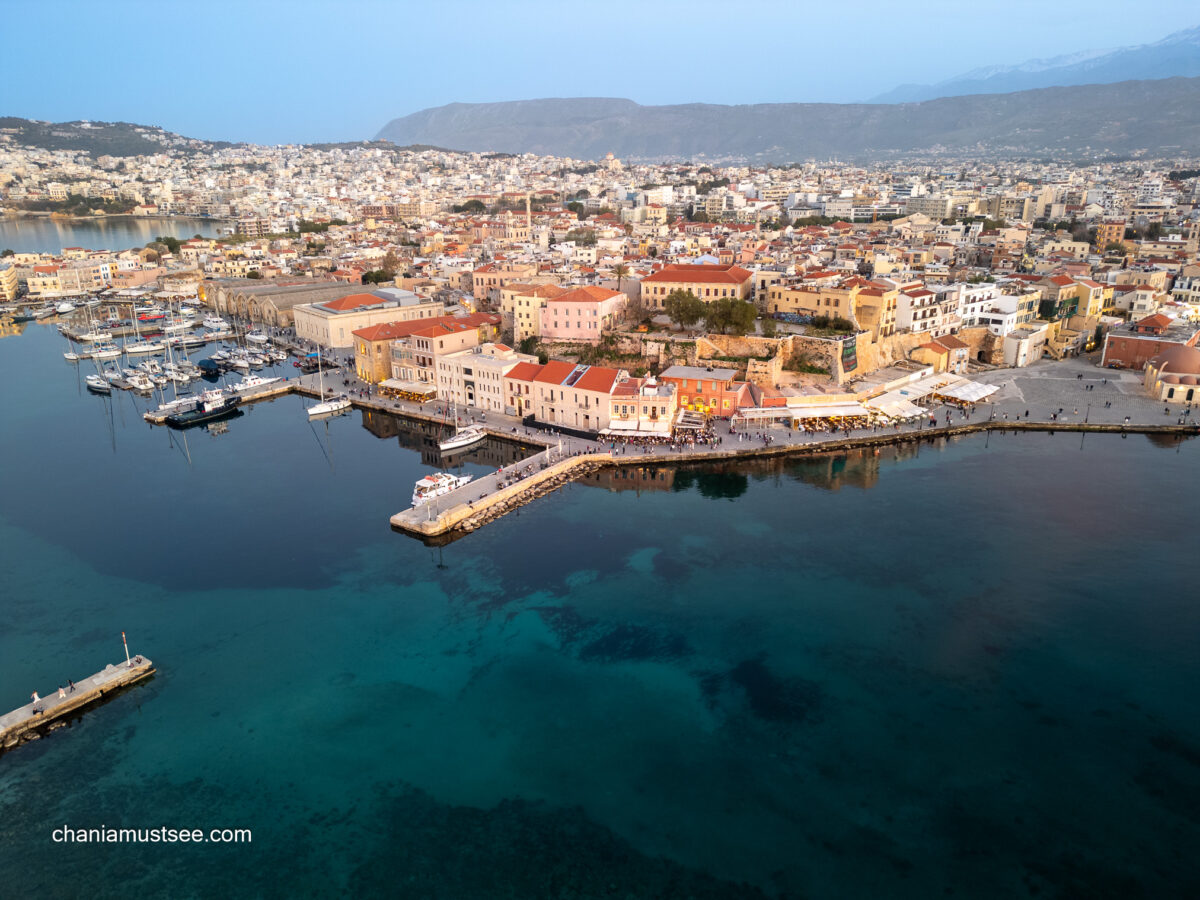
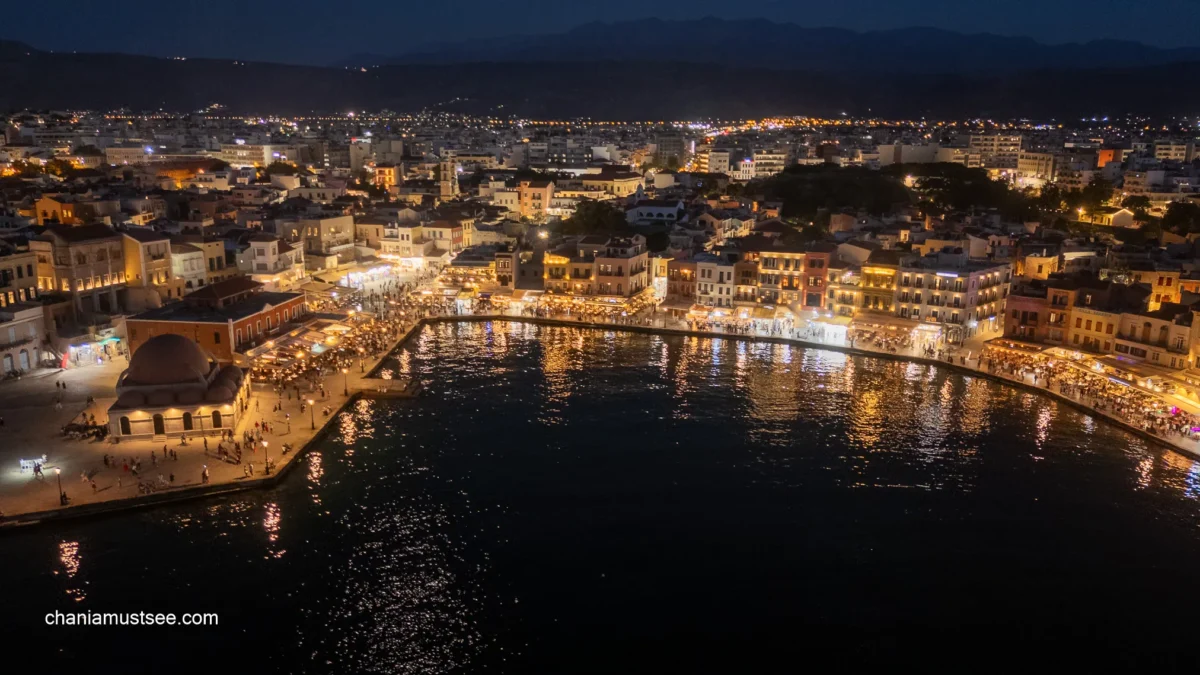
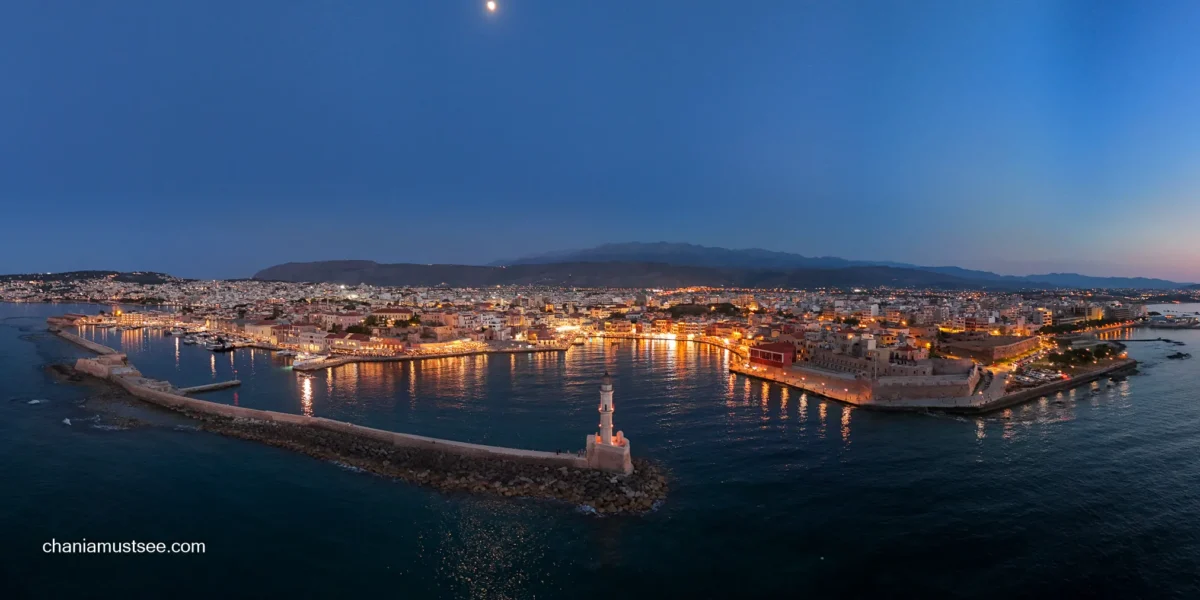
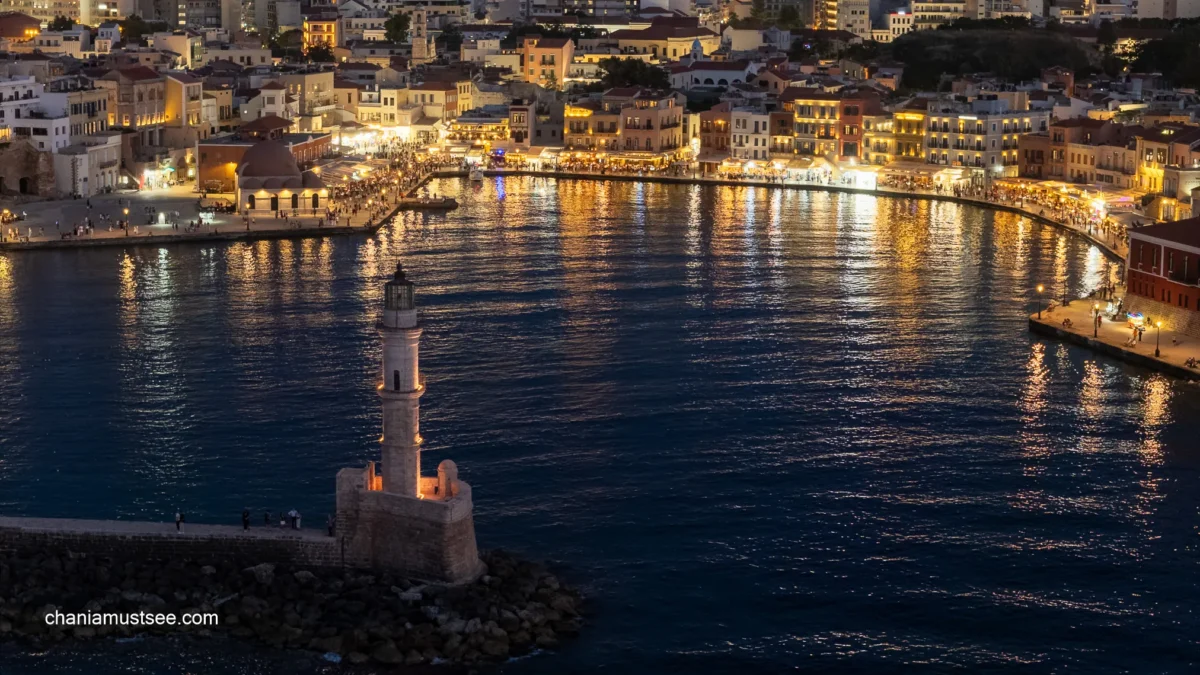
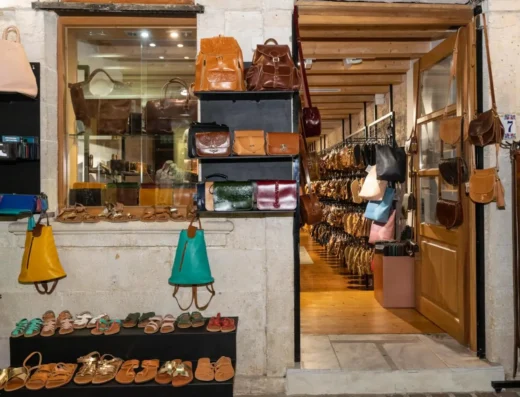
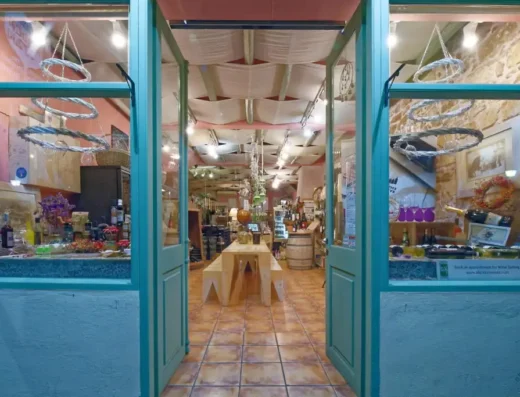

 Read More Reviews
Read More Reviews
Mike Mike’s
a week agoThere is a quiet magic woven into the gentle moments of everyday life—the kind that settles softly in the heart and reminds us how beautiful the world can be. It lives in the warm glow of morning light spilling across a room, in the peaceful rhythm of ocean waves touching the shore, and in the laughter shared between friends who understand us without explanation. Beauty appears in kindness freely given, in courage quietly carried, and in the hope that rises even after difficult days. Sometimes it can be found in the delicate colors of a sunset, painted across the sky like a promise. Other times, it hides in the silent strength of those who continue forward with grace, no matter the weight they carry. There is beauty in love that grows patiently, in dreams that refuse to fade, and in the gentle resilience of the human spirit. When we slow down long enough to notice these small wonders, life becomes softer, richer, and more meaningful. Every moment holds the possibility of light. Every person carries a story worth hearing. And every day, no matter how ordinary it may seem, offers a new chance to feel gratitude, hope, and quiet joy.
Ray Blakebrough
a month agoWell worth a visit. I would suggest trying to get there early morning for breakfast and a walk. Late morning it was absolutely heaving with fierce competition for seats in the harbour restaurants. A walk into the harbour and along the outer harbour wall is a great experience set aside at least an hour to do the walk both ways. A number of places advertised real Greek food, but to be honest, the fare on offer was pretty similar in terms of an "intetnational" menu. The exception to this were a few better quality restaurants just on the edge of the main drag.
Gagan Aulakh
3 weeks agoThis place is absolute magic. The history of nearly 5000 years of civilization is on fully display here. The old Venetian port area is beautiful, restaurants are fantastic and the people are very friendly. Will definitely visit again!
Dawn Cox
a month agoReally busy Lots of tavernas to choose from. Selling lovely Cretan dishes. Great shops down tiny little streets. Beautiful handmade wares. Stunning scenery in the little streets and across the harbour.. Well worth a day trip. Boat cruises for hire too.
Louanna Corina NEGUT
a month agoClear clean water. The lighthouse. Views that one is not tired to make photos enough in any time of day. From land or when you get out with the glass bottom boat. I let here some of my photos. Enjoy..... And go to see by yourself. You will be astonished and happy relaxed all the time you are here.